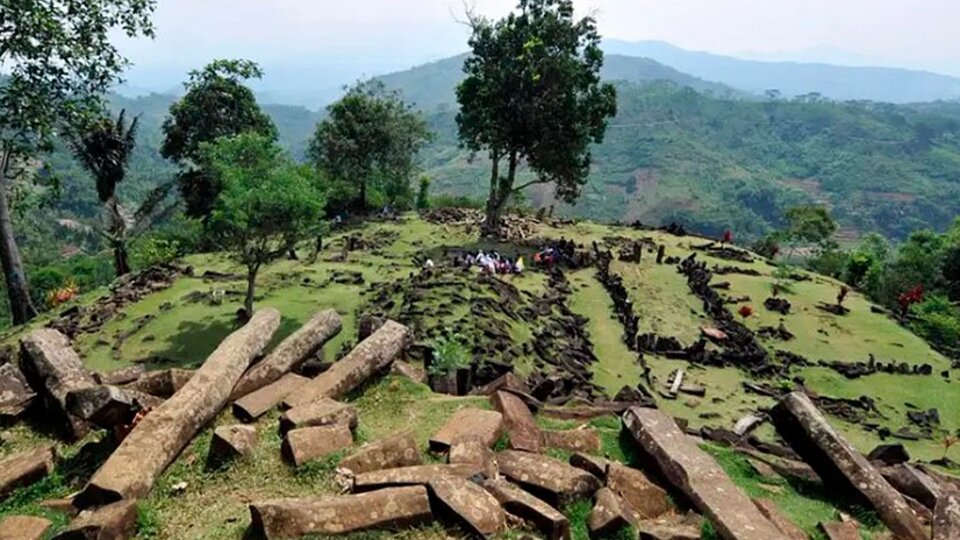Archaeological excavations published a study stating that the pyramid that was built below the prehistoric site Gunung Padang in West Java Indonesia may have been built 27,000 years ago. Therefore, it will be the oldest pyramid in the world, and much older than the huge pyramid of Djoser in Egypt, which is 4,600 years old.
Another important fact is that the pyramid predates the oldest known megalithic ritual site, Gobekli Tepe In Türkiye, which was built about 11,000 years ago. This would completely rewrite what is known about human civilization in Asia.
“The pyramid has become a symbol of advanced civilization,” says paper co-author Danny Hellman Natawijaga, a geoscientist at the National Research and Innovation Agency (BRIN) in Bandung, Indonesia. “It is not easy to build pyramids. High construction skills are needed,” he says.
It is exactly these claims that have left many researchers cold. Lutfi Yundari, an archaeologist at BRIN in Bandung, Indonesia, says his work has shown that the area had people inhabiting the caves between 12,000 and 6,000 years ago, long after the pyramid was supposedly built, adding that no excavations in this period have revealed evidence . Of advanced construction.
“I’m surprised the paper was published as it is,” said Flint Dibble, an archaeologist at Cardiff University, adding that the paper makes “legitimate data” but its conclusions about the site and its age are unwarranted.
Unstable foundations
Gunung Padang has five stepped stone terraces with retaining walls and connecting stairs, and is located on an extinct volcano. Between 2011 and 2014, Natawijaga and his colleagues examined the site using ground penetrating techniques to determine what lay beneath the terraces. They identified four layers and concluded that they represented separate phases of construction. The innermost layer is a core of solidified lava, which has been “finely sculpted,” according to the article.
Later layers of rocks “arranged like bricks” were built on top of the older layer. The layers were carbon dated, using soil between the rocks obtained from a core drilled into the hill. The first phase of construction, according to the article, took place between 27,000 and 16,000 years ago. Further expansions were made between 8,000 and 7,500 years ago, and the final layer, which includes the visible stepped terraces, was laid between 4,000 and 3,100 years ago.
Dibble says there is no clear evidence that the buried layers were built by humans and were not the result of natural erosion and movement of rocks over time. “The material rolling down the hill orients itself, on average,” he says. But Natawidjaya says the column-shaped stones were too large and arranged to simply be rolled there: “The massive and organized nature of these rocks, some of which weigh up to 300 kilograms, rules out the possibility of transporting them over great distances.” .
The authors also reported the discovery of a dagger-shaped stone. “The regular geometry and distinctive composition of this object, and its materials that are unrelated to the surrounding rocks, indicate its artificial origin,” says Natawidjaja. But Dibble refutes this by saying that it is unlikely that the rock was formed by humans. There is no evidence that it “works or anything to indicate that it is man-made.”
Doubts
Gunung Padang features in the 2022 Netflix documentary Ancient Apocalypse, presented by British pseudoscientist Graham Hancock, who promotes the idea that an advanced global civilization was wiped out 12,000 years ago by some turn-of-the-century catastrophe. age The latest scientific text would match the British journalist’s hypothesis. The fact that Gunung Padang was built before the end of the last ice age shows that people of that era were capable of constructing complex structures, “and that’s what makes it a very interesting monument,” says Natawidjaja.
But Bill Farley, an archaeologist at Southern Connecticut State University in New Haven, says the research has provided no evidence of an advanced civilization during the last Ice Age. He says the 27,000-year-old Gunung Padang soil samples, although accurately dated, do not show distinct signs of human activity, such as charcoal or bone fragments. Archaeological records show that the transition from hunter-gatherer societies to complex societies occupying large settlements occurred after the beginning of the Holocene, 11,700 years ago. The oldest known city is the 9,000-year-old site of Çatalhöyük in what is now Turkey.
Posted in we’ll see
The journal Archaeological Prospection and its editor Wiley have since launched an investigation into the article. “The editors, including myself, and the Wiley ethics team investigated this article in accordance with the guidelines of the Committee on Publication Ethics,” said Eileen Ernnewen, an archaeological geophysicist at Tennessee State University and co-editor of the journal.
Farley says people should celebrate Gunung Padang for what it is – “a stunning, important and attractive site” – not because it can be included in any previous narrative about the development of human civilization.
Natawidjaja says he hopes this controversy will not cause hostility in society: “We are really open to any researchers from all over the world who want to come to Indonesia and do some research programs about Gunung Padang. We know very little about our human history.”





